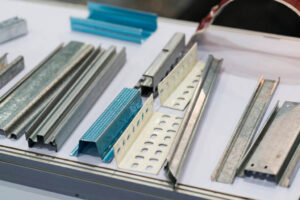One of the most critical considerations when purchasing CNC machined parts is lead time. Lead times can have a significant impact on the productivity and profitability of businesses that rely on CNC machined parts for their operations. In this guide, we will take you through typical lead times for CNC machined parts to help you manage lead times more effectively.
Factors Affecting Delivery Time
Lead times for CNC machined parts can vary widely based on factors such as part complexity, order quantity, materials used, and level of customization required.
Part complexity: The more complex the parts, the longer it usually takes to produce them. Some complex parts may require customized molds, and the production of the mold usually takes 3-5 days or about a week. In addition, parts with complex designs or tight tolerances will require more time and effort to machine, which significantly affects lead time.
Order Quantity: Larger quantities of parts generally require more time to produce than smaller quantities. Larger production runs may require additional setup time or specialized equipment to produce efficiently.
Materials used: Different materials require different processing techniques and tools, which can affect the delivery time. For instance, materials such as titanium or stainless steel can be more difficult to machine than aluminum or plastic, leading to longer lead times.
Required level of customization: Custom parts may require additional design and programming time. For high-quality parts, suppliers may need to produce samples first to confirm quality, which is also a major factor affecting delivery time. However, some CNC machining services offer rapid prototyping or fast turnaround services, which can be very helpful in shortening lead times for custom parts.
Tools and Strategies for Managing Lead Time
Use a Reliable CNC Machining Service: Choosing a reputable CNC machining service with a proven track record of on-time delivery can help ensure that lead times are consistently met. Look for services that provide clear communication and reliable delivery schedules.
Plan ahead: Planning ahead and placing orders in advance can help ensure that parts are delivered on time.
Streamlined production process: Streamlining the production process can help reduce lead times by minimizing the time and effort required to produce each part.
Examples of lead times for CNC machined parts
Small Production Runs: Small production runs of 50 parts may have lead times of 1-2 weeks depending on part complexity and materials used.
High Volume Production Runs: A high-volume production run of 1000 parts may require a lead time of 3-4 weeks depending on the complexity of the part and the machining process used.
Higher volume production runs: Higher volume production runs of 10,000 parts may require a 1-2 month lead time depending on the complexity of the part and the machining process used.
Custom Machined Parts: Custom machined parts with complex designs may require a 2-3 week lead time, depending on the level of customization required.
In conclusion, lead time is an important consideration when it comes to CNC machined parts. By understanding the factors that affect lead times and the tools and strategies to manage them effectively, businesses can ensure they receive parts on time and maintain high levels of productivity and profitability.




